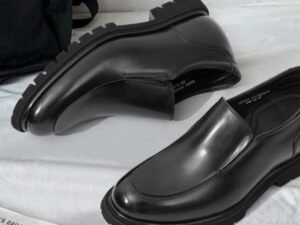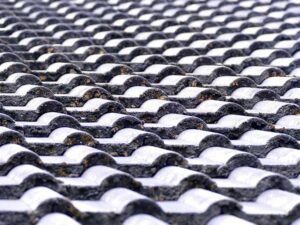When homeowners think about roofing contractors, they often associate them with shingles, leaks, or storm damage. But roofing contractors do much more than repair or replace roofs—they play a vital role in enhancing the energy efficiency and indoor comfort of a home. The two major components they improve are ventilation and insulation. These are often overlooked, yet they significantly impact your home’s air quality, temperature control, and energy costs. A poorly ventilated attic can trap heat and moisture, leading to mold and premature roof damage.
Likewise, improper insulation can cause excessive heating or cooling bills and uncomfortable living conditions. We will explore how roofing contractors contribute to solving these problems. Their knowledge of roofing systems and materials helps optimize airflow and thermal performance in a way that benefits the entire home, not just the roof above. Homeowners looking to improve energy efficiency should check this service during any roof assessment or upgrade. Understanding this hidden value could save homeowners money and prevent future headaches.
How Roofing Contractors Support Ventilation and Insulation
Assessing and Installing Proper Roof Ventilation Systems
One of the first ways roofing contractors assist with ventilation is by evaluating whether the current roofing system allows for sufficient airflow. Poor ventilation can turn attics into ovens during the summer or damp environments in the winter. Roofing contractors begin by inspecting ridge vents, soffit vents, gable vents, or other existing ventilation systems. Their goal is to determine whether hot air is escaping and cool air is entering at a rate that supports attic balance. They also look for signs of poor ventilation, like mold, warped wood, or uneven shingle wear.
If the airflow is insufficient, contractors recommend and install the appropriate ventilation components. This may involve installing new ridge vents at the peak of the roof, adding soffit vents under the eaves, or utilizing mechanical fans in areas where passive systems are insufficient. By installing the right kind of ventilation tailored to the roof’s pitch, size, and materials, they protect not only the roof itself but also reduce indoor heat and moisture levels. This adjustment helps heating and cooling systems operate more efficiently, making the home more comfortable in extreme weather conditions.
Evaluating and Enhancing Attic Insulation
In addition to ventilation, insulation is another major factor that roofing contractors can improve to enhance home performance. While many homeowners think insulation is a task for interior contractors, roofing professionals often include it as part of their service, especially during roof replacements. When a contractor peels back layers of an old roof, they can often access the attic and determine whether the insulation meets current standards. If it’s outdated, thin, or damaged by moisture, they can recommend upgrades. Common insulation types they work with include fiberglass batts, blown-in cellulose, or spray foam. They also look for air gaps around vents, plumbing, and light fixtures that allow heated or cooled air to escape.
Sealing these gaps before installing insulation significantly improves energy retention. By increasing R-values (a measure of insulation’s resistance to heat flow), roofing contractors help maintain more stable indoor temperatures. This reduces the strain on HVAC systems and lowers energy bills over time. It’s a practical improvement that many people overlook during roof renovations, but it can yield long-term savings.
Coordinating Roof Design with Insulation Strategy
Roofing contractors don’t just work on individual components—they understand how the entire roof system interacts with a home’s insulation strategy. This means selecting roofing materials and designs that complement the insulation’s performance. For example, a metal roof may reflect more heat than asphalt shingles, which helps reduce the temperature in the attic. However, this can be ineffective without proper insulation underneath. Roofing contractors consider these factors when recommending roof replacements or upgrades. They may also recommend “cool roof” systems that combine reflective materials with insulation-enhancing features. These systems not only reduce the urban heat island effect but also improve interior temperature control.
Furthermore, contractors coordinate with builders or homeowners to ensure roof vents and insulation don’t cancel each other out. Excessive insulation with poor ventilation can lead to moisture buildup, while excessive ventilation with inadequate insulation can result in energy loss. Striking the right balance between the two is something roofing contractors are trained to manage. Their attention to roof design enables insulation and airflow to work in harmony, rather than in conflict.
Preventing Long-Term Damage Through Moisture Control
Moisture is one of the biggest threats to both insulation and roof health. When warm, humid air from living spaces rises into the attic and meets a cold roof deck, condensation forms. Over time, this moisture can deteriorate insulation, damage wood framing, and create an ideal environment for mold. Roofing contractors help prevent this by ensuring that both ventilation and vapor barriers are properly installed and maintained. During a roof inspection or replacement, they look for signs of past moisture issues, such as dark stains, peeling insulation, or rusted fasteners.
Roofing contractors play a far greater role in home efficiency than most homeowners realize. Beyond installing shingles or fixing leaks, they enhance indoor comfort, air quality, and energy savings by ensuring proper ventilation and insulation. Their work prevents moisture problems, reduces heating and cooling costs, and ensures the roof system supports—not hinders—your home’s performance. By evaluating airflow, upgrading insulation, optimizing roof design, and tailoring solutions to regional climates, roofing contractors provide layered benefits that last well beyond the final nail. Whether you’re planning a roof replacement or just thinking ahead, involving a roofing contractor in your ventilation and insulation strategy is a smart step toward a more comfortable and cost-effective home.










